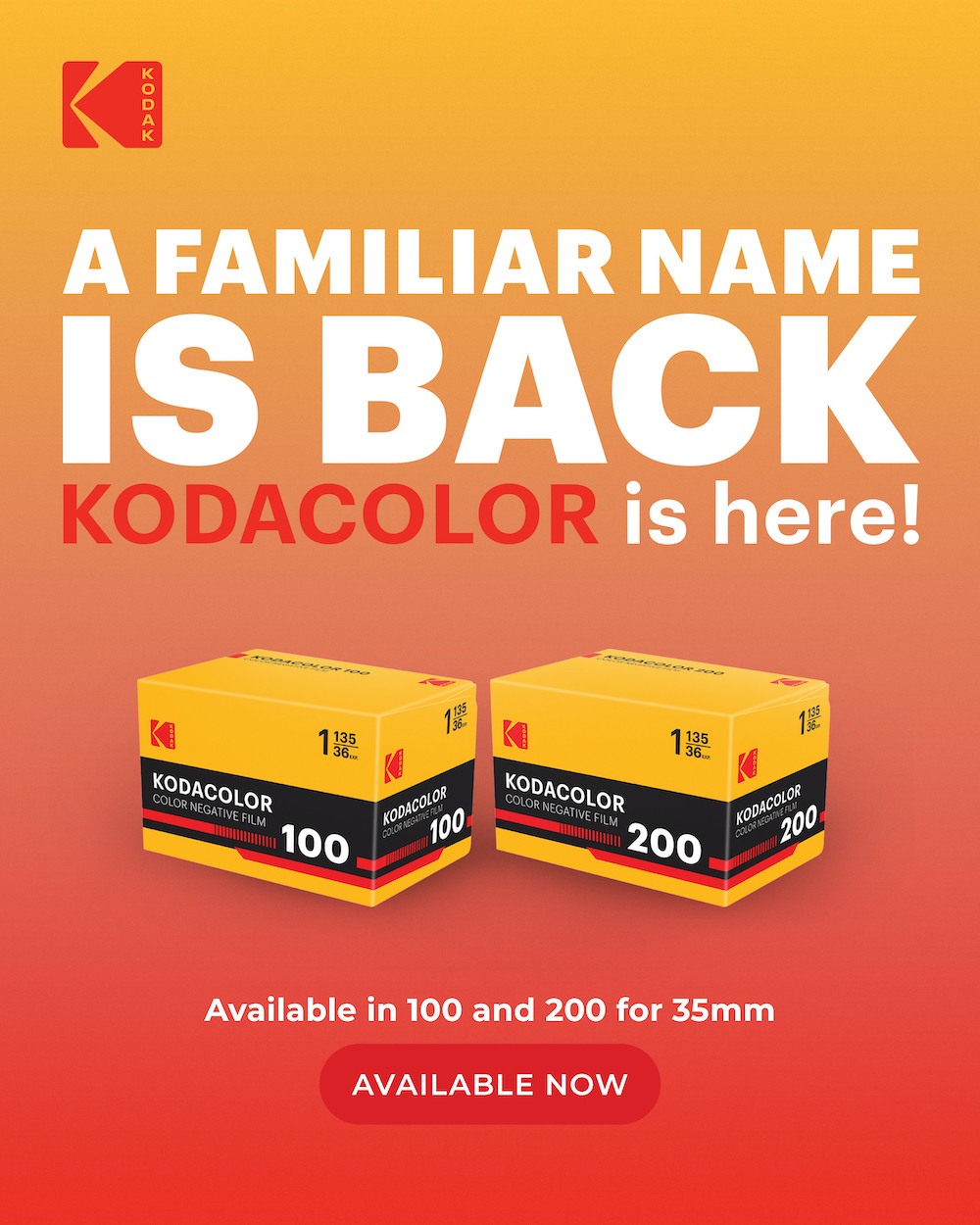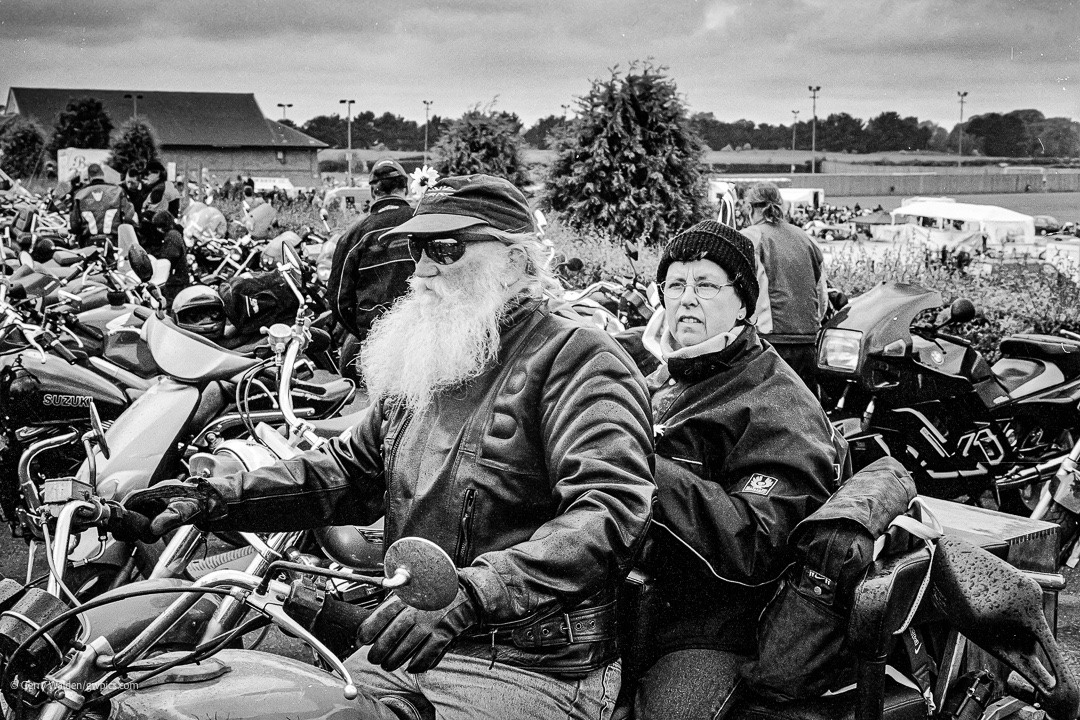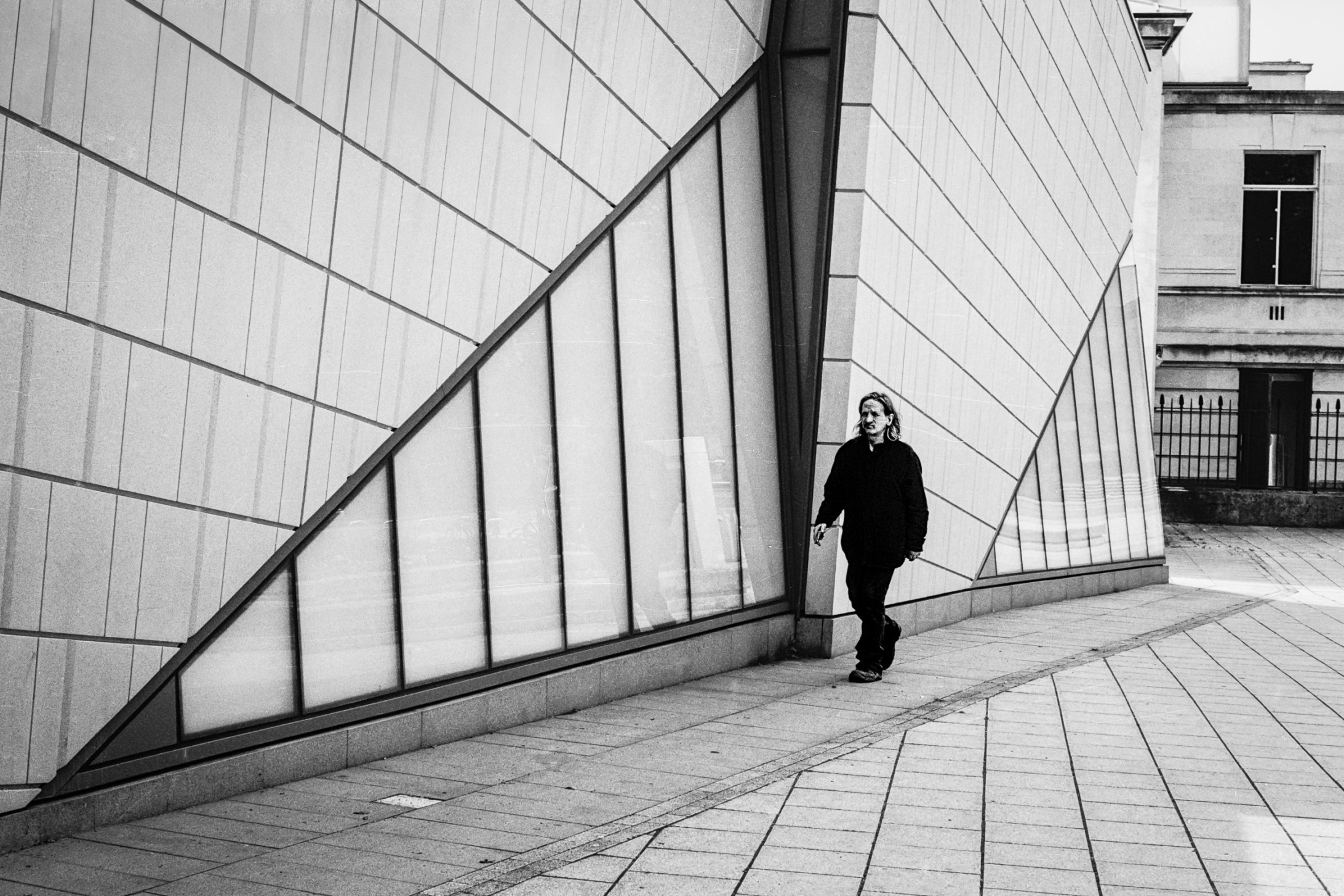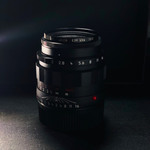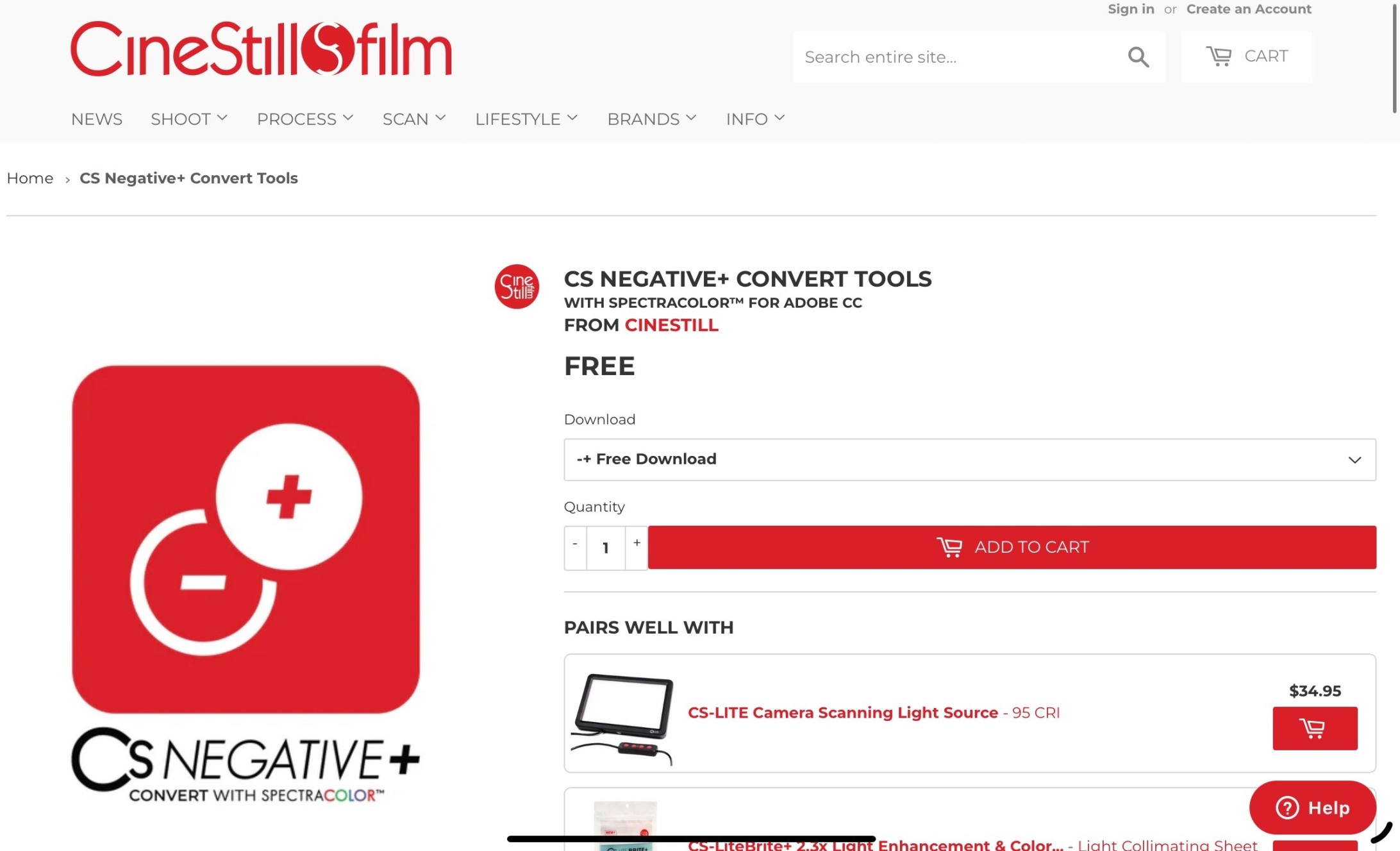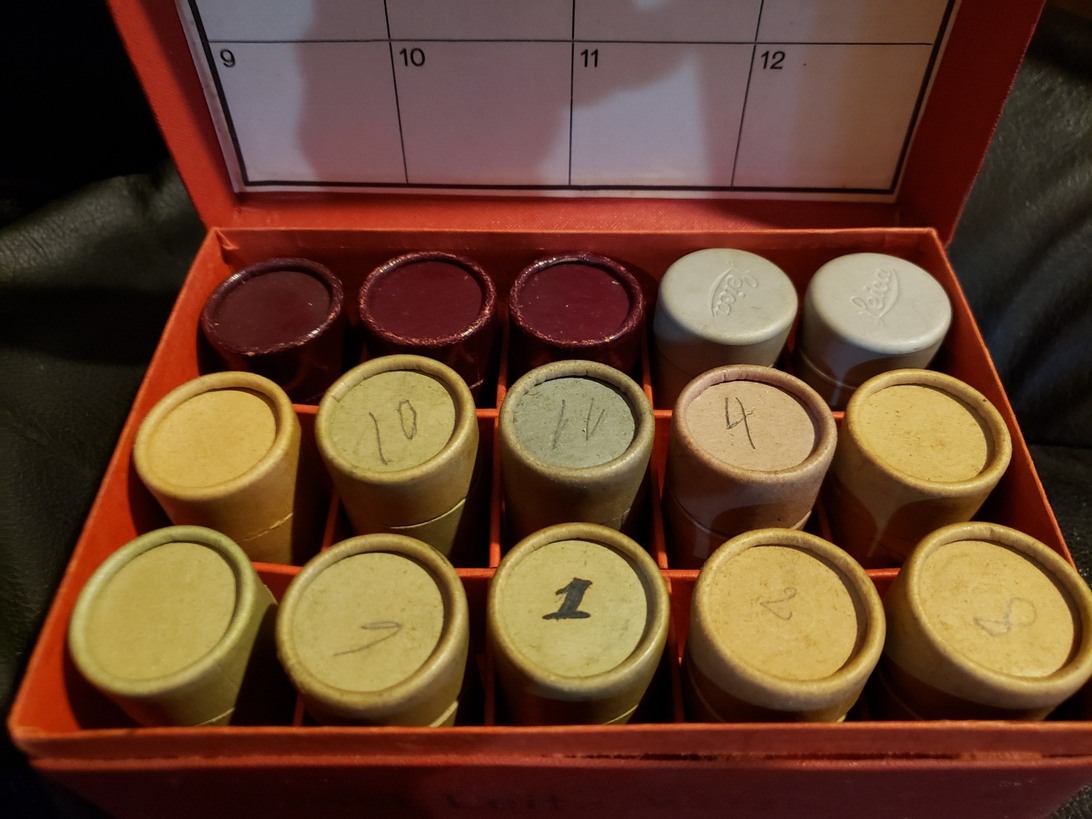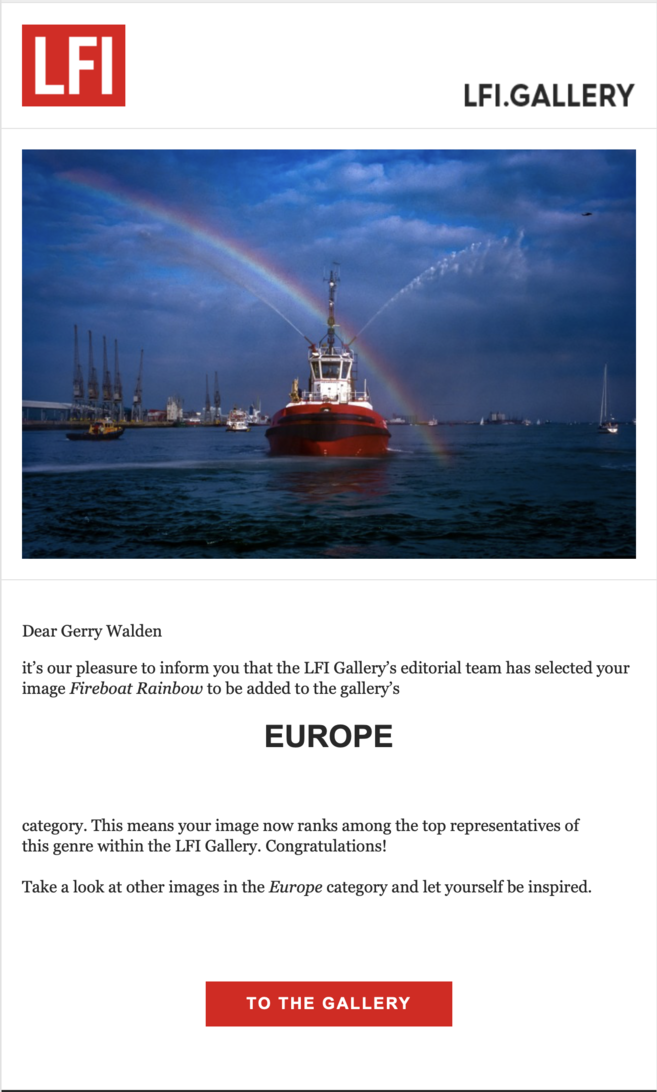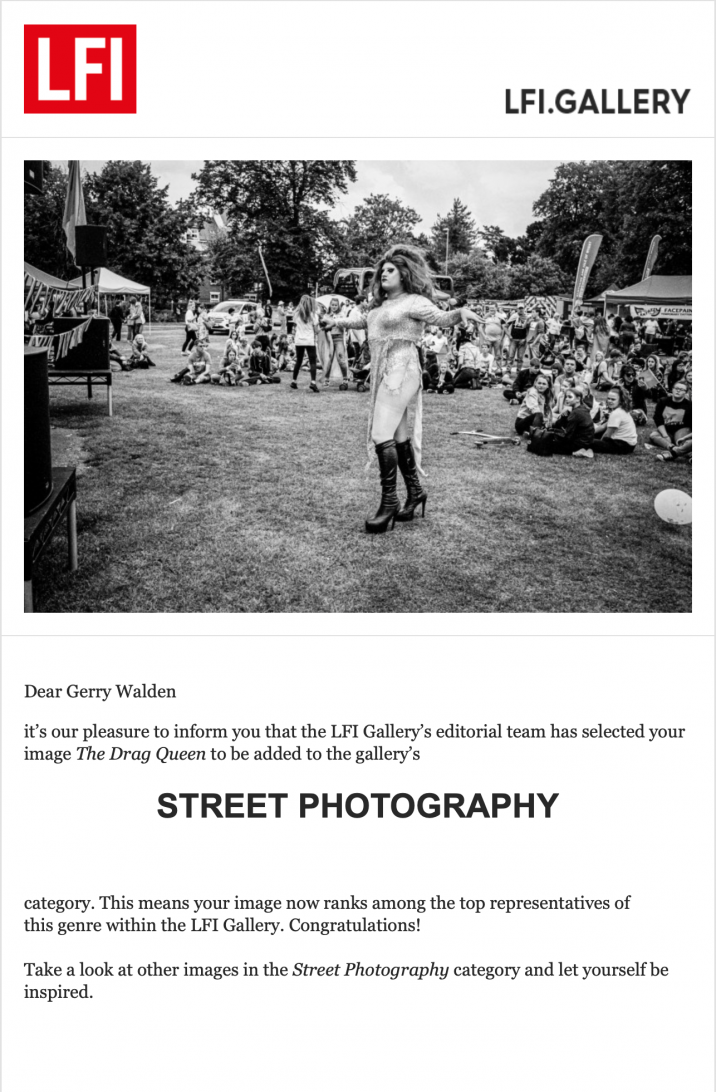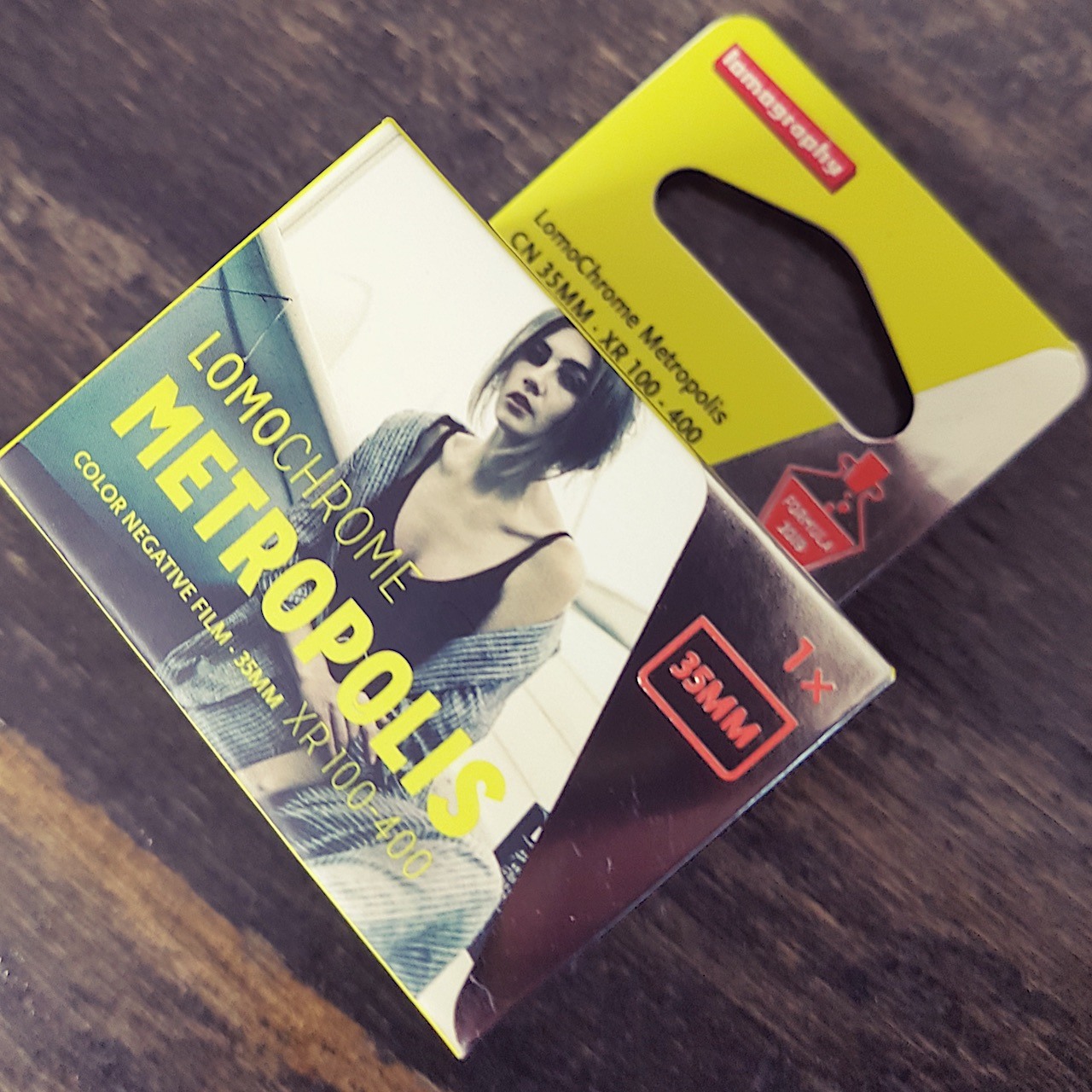Search the Community
Showing results for tags 'film'.
-
Hi everybody, I’m a computer science engineer who has been working, as a hobby, the last three years in a new, more precise, way of recreating film look with digital cameras. I’m posting here for feedback, in case anybody of you would like to test the application (with the M9) and show the results and your opinions. I usually shoot film photography but also I like the comfort of digital. The problem is that I’ve never been happy with existing film emulations. Mainly because of that, because they are emulations instead of simulations. METHOD USED For doing so, instead of doing a generic conversion for every camera, I’ve done a specialised conversion for the Leica M9 based on simulating the chemical process and spectrum response, instead of applying curves and other stuff. In the end, I thought, if analog and digital are just two instruments which capture light, I thought, maybe is there any mathematical conversion to make the digital to look like film? I mean, if I take the same photo with analog and digital, under exact same conditions (light / aperture / exposition /…) could I make them look exactly the same? It’s based on chemical simulation and the Leica M9’s response to spectrum. Then LUTs and finally some extra calibration. I think that it could be improved because I’ve used home made or open source tools for calibrating and so on, which are far from perfect. EXAMPLES (Analog vs Converted Digital) Following are some examples of Superia 200 and TriX 400. Click in each photo to see high resolution. DNGs shoots taken with Leica M9 (left), and FILM shoots taken with Minolta CLE (right) at same conditions (aperture / exposition / ISO). All shoots taken with Zeiss Biogon T* ZM 35mm f/2. The examples show several photos, which are the following: +------------------------+------------------------+ | original DNG | | +------------------------+------------------------+ | converted DNG | scanned FILM | +------------------------+------------------------+ | developed DNG | developed FILM | +------------------------+------------------------+ For the generated simulated negative TIFF file and the scanned TIFF file I’ve applied exactly the same develop parameters. TriX 400 - 1 TriX 400 - 2 TriX 400 - 3 Superia 200 - 1 Superia 200 - 2 Superia 200 - 3 Superia 200 - 4 Superia 200 - 5 Superia 200 - 6 CONCLUSIONS Tonal range - Biggest difference between digital and film Dynamic range - Digital is faaar more detailed in the blacks, film never gets burnt, meanwhile digital gets burn quite fast. Film has more microcontrast, it's more sharpen Digital is a little bit more contrast after developing, I imagine it’s because it reach white level faster, then, when doing autolevels with the developing program, as a result, it’s a more contrast image. DOWNLOAD I'm having a console application ready, if interest is shown it will be ready quite soon! CAVEHEATS / LIMITATIONS The program only accept DNG, because I need all the light captured by the camera, instead of a JPG already converted and really dependent on camera self made adjustments. The program only accepts photos taken at the ISO of the certain film that is gonna be used. For example, for TriX400 it will accept only Leica M9 DNGs at 400 ISO. I’ve also done tests with ISO 200 and 800, and the results were quite satisfactory but, for complexity reasons, I prefer to let it be native film ISO for the moment. Highlights are not always correct, and sometimes they look weird, mainly in color film. This is due to bayer sensor pattern and its different intensity response (for Red, Green and Blue channels). FUTURE (& PAST) WORK Leica M10-D Leica M8.2 THANKS Super thanks to the creator of LibRaw, a wonderful C++ library for working with RAW files. Any questions I’m open to answer 🙂 Best regards everybody. Tomás AKA “Camalogica”
- 182 replies
-
- 11
-

-

-
- 10 replies
-
- 3
-

-
- cinestillfilm
- kodacolor
-
(and 3 more)
Tagged with:
-
Taken at a gathering of bikers who do an annual run to raise money for a cancer charity. One of a series of images. Gerry
-
I just got a brand new MP (manufactured July 2025) and the vertical alignment is slightly off. The dealer offered to exchange it but they don't have a replacement on hand and will have to wait for Wetzlar (unfortunately with no timeframe). I know the vertical alignment is just behind the small screw on the front. Does anyone know if the recent MPs require a special tool for the vertical alignment like some of the other film Ms such as the M6 do? Or is it just a 2mm hex like the horizontal adjustment?
- 4 replies
-
- mp
- rangefinder
-
(and 6 more)
Tagged with:
-
I'll be visiting Paris in September with my MP. To save space in my luggage and avoid airport X-ray machines, I'd prefer to buy film in Paris, shoot it, and have it developed there. I emailed the Leica Rive Gauche store to ask if they sell film. They don't, except for the new Leica Monopan 50 film when it arrives, maybe in August. But that's too slow a film for my needs. So, can any of you familiar with Paris recommend a place where I can buy Ilford films, like FP4 and HP5? Also, is there a lab in Paris that provides a relatively quick turnaround (three or four days) for developing negatives and providing scans? Thanks for any help.
-
Taken a while ago but just added to my street photography portfolio on my website at https://gwpics.myportfolio.com/street-photography. Leica M7 + 50mm Summicron-M f2 Gerry
- 1 reply
-
- 3
-

-
- street photogtaphy
- black and white
- (and 6 more)
-
Cinestill CS Negs Basically presets combination, im used to NLP… but sometimes im away from my laptop for a while.. now the ipad might be handy.. but this is far from professional tools.. only more manual adjustments, used in LR mobile i did for fun, here’s ektar
- 10 replies
-
- 6
-

-

-
- negative
- conversion
-
(and 3 more)
Tagged with:
-
Taken in the pedestrianised cutural quarter in the centre of Southampton. Leica M7 + 35mm Summarit f2.5 with Kodak Tri-X which was lab processed and then scanned using a Plustek 8200i and Silverfast software. Cropped from about one-third of original and post-processed using Lightroom Classic. Gerry
- 4 replies
-
- 3
-

-
- black and white
- monochrome
-
(and 8 more)
Tagged with:
-
I'm planning on purchasing a polarizer from URTH (https://urth.co/products/cpl-polarizing-filter-plus) but I am unsure of whether or not I will be able to set the filter rotation correctly on my M3. I had contacted URTH themselves and they said to set the orientation correctly by looking through the filter before attaching to the lens, I though this sounded impractical. As the M3 does not have any way of seeing through the taking lens, how should I use a polarizer and/or other filters that rely on achieving the correct orientation to produce the desired affect.
-
https://youtu.be/2wmkHDrR2cc?si=dOUXF1HybtbAo3U9
-
So, my M3 arrived on Christmas Eve and now has a roll of HP5+ in it. Still working on the settings to cope with the light and lack of meter (using iPhone Light Meter App for now). Just means taking two shots all the time as I realise I've checked something but not made any changes! A real change from my previous SLR/DSLRs - things are now always in focus, except in the little square. I know practice is the best form of learning, and I'm doing a lot of that. But does anyone have any recommendations for books on rangefinder technique?
-
Help! My father recently passed away and I sifted thru his camera closet. I found film, presumably from my grandfather, who was an avid photographer. It is a Leica box with cardboard tubes (see image). These tubes had film in them. Most of the film was tightly rolled, not encased in anything other than the cardboard. There were a couple (3?) that had a metal cartridge around them. I have no idea which camera the film came from. All I know is that one of the rolls was possibly from 1934, as that was written on the bottom of the cardboard tube. What has woken me up in a cold sweat was that I fear that the tight rolls...is it possible that he offloaded the film without developing it? Have I exposed the film by removing it from the tubes in the light? Thanks in advance for any thoughts/ideas on this crazy situation!
-
This fireboat is celebrating the arrival of a new cruise liner on her maiden voyage in my home town of Southampton. The image is from my archive when I was shooting film. Taken on Fuji RDP using a Leica R8 but I am afraid I have no other details recorded. It was recently selected by LFI to include in their galleries. Sadly the cruise terminals are empty now because of COVID-19, but the future looks promising. The container ships are as busy as ever (and we see the very biggest) and a major new cruise terminal is being constructed. Gerry
-
Because of the covid-19 lockdown I am unable to go out on to the streets to photograph, not that there are any people around. I am therefore still working through my archives, and came across this image from Paris in 2002. Taken with a Leica M6, 50mm Summicron f2 and using Kodak T400CN film (which I used to love!). I hope you like it. I have also been revamping my web site using Adobe Portfolio, which is part of the Lightroom/Photoshop package, and like the results so far, although it is a work in progress. Take a look here Gerry
- 10 replies
-
- 11
-

-
- street photography
- leica m6
-
(and 7 more)
Tagged with:
-

mp Leica MP 2019 batch 52XXXX scratching film.
Yaakov posted a topic in Leica M-A / M7 / MP and Film M
Disclaimer: I'm starting a new topic regarding the issues found in my newly purchased Leica MP, the purpose of this is to share any ideas that could lead to a solution, this is not a rant about Leica lack of QC which we all know is becoming an issue. After receiving my camera I run a roll of Kodak TriX 400, after developing the film I found a trace of scratches, I did several test with other films which I didn't develop (in case the scratches were being caused by my development process): Bergger Pancro 400, Ilford HP5+. They all show the same type of scratches. This is an undeveloped roll, https://ibb.co/RbxynrM https://ibb.co/8xkfs17 I found several threads with people claim the source of this issues was the pressure plate so I checked mine in order the find anything that could be the reason, the screws in the plate don't match the position of the marks in the film and the surface of the plate in my camera feels smooth and flat, I wondered if maybe the reason could be the bridge that has the connection for the light meter but after more inspection it was obvious that the plate keeps the very flat and it does not touch that area. I did another test in which I rub some film on the surface of the plate, to my surprise the film was very scratched, I did the same against the plate in my 1958 M2 and it didn't do a single one. I also did a couple of prints to verify the scratches appear and unfortunately the scratches are visible even on a middle size print. This is the print, the scratches appear in the top and the bottom https://ibb.co/VpKsdfb -
Hi, I'm new to Leica and I'm looking into small-ish lens for everyday use. Which one of these (assuming all are in good condition) would you recommend? Prices are: Summicron €389 (little haze) Elmar €499 Modern Elmar-M €660 Leaning towards the modern Elmar-M but I have zero experience with leica lenses. Thank you!
-
When I was a young child my summers were spent walking the 600 or so metres from my home to the nearby river to play in its clear waters. Now close on 70 years later this image reminds me so much of those happy days. That is the power of photography. Leica M6 + 50mm Summicron f2 - Kodak T400CN film - ©1997 Gerry
- 3 replies
-
- 4
-

-

-
- 50mm summicron f2
- leica m6
-
(and 4 more)
Tagged with:
-
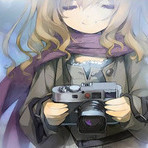
Explodieren gerade die Preise für filmbasierte Fotografie?
Anigrapher posted a topic in Analog-Forum
Hallo werte Leica-Forumsteilnehmer, vor gut einem Jahr hatte ich mich wegen eines Belichtungsproblems meiner R4 hier im Leica-Forum bereits zu Wort gemeldet (und weiss nun endlich auch, dass der kleine Elektromagnet, der die Springblende im rechten Moment stoppen soll, defekt ist. Alle bisherigen Reparaturangebote überstiegen aber bei weitem den Wert der Kamera, so dass ich mir als "vorläufigen" Ersatz für mein R-System eine zweite R5 zugelegt habe, die auch glücklicherweise tadellos funktioniert...). Ich möchte Heute aber ein anderes Thema ansprechen, welches mir schon seit einiger Zeit sprichwörtlich "unter den Fingernägeln brennt": Findet ihr auch, dass innerhalb von nur gut ein bis zwei Jahren das Preisniveau der Analogfotografie exorbitant gestiegen ist??? Klar, dass das fast schon unterirdische Preisniveau für alte Kameras, Filme, Entwickler & Entwicklungslabore von vor gut zehn Jahren längst Geschichte ist, nie mehr wiederkehren wird und sicherlich auch dem Fortbestand der filmbasierten Fotografie nicht unbedingt förderlich war. Nischeninteressen können durchaus kostspielig sein, und dazu gehört klassisches Fotografieren auf Film ja inzwischen eindeutig. Aber was jetzt gerade abgeht - ganz ohne Corona-Krise - ist nun wirklich teils schon absurd! Da werden etwa für uralte, abgelaufene 135er-Diafilme wie Agfa Precisa oder Kodak Elitechrome teilweise reinste Wucherpreise verlangt. Hier mal ein Beispiel aus dem bekannten Online-Auktionskaufhaus: https://www.ebay.de/itm/Fur-Sammler-1x-Agfa-Agfaphoto-Precisa-CT-100-36-Diafilm-Ablaufdatum-2014-12/223921237768?hash=item3422beef08:g:-OAAAOSwvRJeTrdi Aha, für Sammler also - ernsthaft?! Es gibt wirklich schon Leute, die jetzt unbedingt noch mal einen erst vor kurzem ausgelisteten Drogeriemarkt-Diafilm verknipsen wollen und bereit sind, derartige Wucherpreise zu berappen??? Bei den gebrauchten Kameras sieht es nicht besser aus. Auch hier meint wohl mittlerweile jeder windige, Opas Keller ausräumende Erbschaftler irgendeiner banalen Durchschnitts-Spiegelreflex, er habe das große Los gezogen und müsste hinsichtlich des aufgerufenen Verkaufspreises nun einen auf Fachhändler machen. Kam mir jedenfalls so vor, als ich unlängst eine Kamera für eine fotografierende Freundin aussuchen durfte, die nicht allzu teuer sein und einen PK-Anschluss haben sollte. Also mal bei Ebay-Kleinanzeigen nach alten Ricohs umgesehen, weil diese entsprechend eigener Erfahrung einfach, gut und robust sind. Doch dann kam tatsächlich nur sowas hier bei rum: https://www.ebay-kleinanzeigen.de/s-anzeige/ricoh-xr-10-mit-zubehoer/1332175555-245-4619 Die gleiche Kamera - ich würde sie als ganz gut ausgestattetes Einsteigergerät bezeichnen - habe ich noch mit einem deutlich besseren 50er-P-Rikenon vor drei Jahren für sage und schreibe 15 Euro bei einem Fachhändler (!) als Wühltischfund erworben. Sie funktioniert übrigens ganz ausgezeichnet, was ich von den genannten Privatangeboten eher nicht erwarten würde... Ich bin wohl nicht der Einzige, dem dieses aktuelle Wucherpreisniveau auf dem Gebrauchtmarkt aufgefallen ist, auch der von mir sehr geschätzte Foto-Youtuber Steffen Schüngel hat dies unlängst thematisiert: https://www.youtube.com/watch?v=YN1hXQmbaNA Was meint ihr, findet ihr auch, dass die derzeit stark steigende Preisspirale im Endeffekt zu einer weiteren Abnahme an Filmfotografie-Interessierten - inzwischen soll das "Jammertal" ja schon durchschritten sein und wieder mehr auf Film fotografiert werden - und damit irgendwann zu einem selbst für den geneigten Leica-Nutzer kaum noch bezahlbaren Vergnügen werden könnte? Die verschiedenen Meinungen hierzu würden mich mal interessieren. Grüße an alle Leica-Fans, Anigrapher -
Hello everyone! I'm new to the leica film cameras but I came up a rather very nice iiif in great condition which comes with a summarit 50mm f1.5 going for about $550. This sounded like a pretty good deal to me, however, upon closer inspection the lens seemed to have a lot of haze (not sure about fungus) as when I performed the light test there were specks everywhere. It seemed to be internal and in the second glass?? Not sure how to fix it or if I even can, also the focus ring was pretty stiff (but that isn't a deal breaker or anything). Like I said, the body of the camera was in very good condition however the lens is my biggest concern. As most of you are owners/experts and such please help me out and let me know if this is a good deal or not. Thanks, Ashley
-
Gefahr am Airport: Neue CT-Scanner ruinieren jeden Film
Andreas_Kreuz posted a topic in Analog-Forum
Immer mehr Flughäfen rüsten ihre Sicherheitsschleusen auf neuartige CT-Scanner um, auch in Deutschland. Sie bringen für Flugpassagiere deutlich mehr Komfort, Filme und Fotopapier werden hingegen bereits bei einem Durchgang durch die Geräte ruiniert – davor warnen jetzt Kodak Alaris und Ilford unabhängig voneinander. https://www.photoscala.de/2020/02/02/gefahr-am-airport-neue-ct-scanner-ruinieren-jeden-film/ -
-
Life is pretty quiet photographically for me at the moment, mostly due to really bad weather with heavy rain which makes street photography almost impossible. This means I am continuing my journey through my archives, and this I had forgotten. It shows a typical English pastime - playing bowls. The white clothes are the standard dress for everyone, and afternoon tea is almost compulsory. English tradition at its best. Leica M3 + 50mm Summicron f2. Ilford 400 Delta. 1997.



